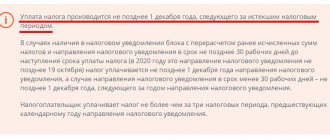It is not always easy for a buyer to understand the terms in home sales advertisements. JCat.Real Estate will explain how a direct transaction differs from an alternative one and will help you make your choice.
In search of the ideal apartment or house, buyers often pay attention to the features of the property itself rather than to the description of the type of transaction. At the same time, the type of sale of an apartment largely influences the terms and conditions of the contract and determines the buyer’s risk.
There are three main options for transactions when buying and selling real estate:
- direct (free) - a simple selling option;
- alternative (“alternative”) - a complex type of transaction in which several types of real estate and several people take part;
- chain - several “alternatives” that occur simultaneously.
According to experts, in the Russian Federation more than 70% of real estate transactions occur according to an alternative scheme. This is due to the fact that few people can afford to simply sell their home without purchasing another living space in return. That is, in fact, in most cases, residents of Russia “exchange” apartments and houses for other real estate properties - this is exactly what the alternative sale of an apartment allows.
In order to weigh the possible risks and determine the optimal option for concluding a contract, it is necessary to clarify all the features of these types of transactions. Even if a real estate agent is looking for a property, it is important for the buyer to be aware of events - even the best agents are not immune to mistakes.
Features of an alternative transaction
Typically, the sale of an apartment is associated with certain life circumstances:
- people want to increase their living space or buy less;
- move from an apartment building to a private one and vice versa;
- exchange one apartment for several or sell several and buy one with the proceeds, and so on.
Having no available funds to purchase a new home, the desired transaction is carried out by exchanging what is available for something that suits the desired result. Since direct exchange is only possible for certain categories of real estate, sales and purchase transactions are concluded.
Often the seller has nowhere to move while searching for an apartment, so at the same time there is a search for a buyer for the old living space and a suitable home for purchase. At the time of sale of the apartment, the previous residents remain in it, the date of moving is specified in the contract.
Or, if the owner of the apartment belongs to a socially vulnerable segment of the population (minors, pensioners). It is possible to sell the property of this category of citizens on the condition that they are provided with other housing, the same or better . Alternative sale here becomes the only available option.
In all cases, the signing of the purchase and sale agreement and the transfer of documents for registration of rights are carried out at the same time - this is a feature of such transactions.
The simultaneous sale and purchase of housing forms a kind of chain.
For example, a chain of three links:
- Buyer;
- The seller is also the buyer;
- Salesman.
Here a person sells his apartment and buys a new one in return. This is the simplest scheme.
Practice shows that there may be more participants in alternative sales. For example, people sell two apartments in order to buy one with a larger area in return.
It turns out:
- Two buyers;
- Two sellers, they are also one buyer;
- Salesman.
In turn, the last seller can also be a buyer, that is, the chain continues. The difficulty of completing such transactions is that you need to simultaneously find one or several suitable buyers and sellers, and conclude several purchase and sale transactions that are independent of each other.
The more people are interested, the more difficult it is to organize the process. If one of the participants refuses in the process, you will have to start all over again.
Arbitrage practice
The main difference between an alternative sale and purchase is the participation of three or more parties. Despite the fact that all transactions are combined into one whole, each agreement is executed separately in Rosreestr. If the state registration of one policy is suspended or refused, the owner of the problem apartment cannot fulfill his obligations. Often, participants in a counter sale are forced to seek legal protection.
Citizen K. applied to the Primorsky District Court of St. Petersburg with a demand for the return of the advance. The plaintiff entered into two sales contracts. At the same time, K. made a deposit under the agreement for the acquisition of new living space.
The Federal Registration Service refused to formalize the transfer of ownership rights under the document in which K. is indicated as the buyer. The seller of the second apartment refused to return the amount received under the advance agreement. The contract for the sale of an apartment owned by K. was registered in accordance with the requirements of the law.
At the court hearing, it turned out that the defendant did not have the right to sell an apartment that was jointly owned by several persons. The judge ordered the defendant to return the advance amount. In addition, the court decision canceled the state registration of the apartment belonging to K.
Algorithm of actions
Since finding a buyer for an apartment can take more than one month, it’s worth starting with this.
Valuation of real estate for sale
The first step is to study the supply and demand of real estate in your area (locality) in order to set an adequate price for the apartment and determine the amount of the surcharge.
Taken into account:
- housing area;
- technical condition;
- need for repairs;
- floor;
- year of construction;
- location in relation to shops, kindergartens, schools, hospitals;
- transport interchange.
These are standard parameters taken into account when selling; in fact, there may be more of them. Each buyer sets his own conditions that he needs.
You can enter into an agreement with a specialist. In this case, the contractor is required to participate in a self-regulatory organization.
The assessment will be based on documents and visual inspection. Upon completion, an official conclusion is presented. This is usually required by the bank when applying for a mortgage.
Search for a buyer and search for a new apartment
After the assessment, the advertisement for sale and photographs of the apartment are placed on special websites, in print publications, social networks, and so on. Or an agreement is concluded with a real estate agency.
An approximate selection of apartments suitable for purchase begins. It is worth having several options in stock while you are searching for a buyer; they may be sold to other people, the price may rise, or any other conditions may change.
When a buyer is found:
- A preliminary agreement is concluded with him.
- The period required for the seller to find a new apartment is agreed upon.
The buyer pays a deposit. The amount of the deposit is indicated in the preliminary agreement, and the buyer is given a receipt.
Conclusion of preliminary purchase and sale agreements
Since finalizing an alternative sale takes time, having a preliminary agreement is important. In this case, it becomes a guarantee that the parties will fulfill their obligations, since they are responsible for the violation.
Basic conditions, the indication of which is mandatory:
- subject of the contract;
- price;
- amount of collateral;
- the seller’s obligation to confirm the fairness of the sale;
- the final date for concluding the transaction.
A sample purchase and sale agreement can be downloaded here.
If there is no suitable option, a search for new housing is carried out within the prescribed period, and in parallel with the search, documents are prepared for the sale of your own:
- Passport;
- Property registration document;
- The document on the basis of which the citizen owns the property being sold;
- If there is a spouse, his written consent to the sale;
- If minors - permission from the guardianship authorities;
- If we are talking about a communal apartment - the consent of the neighbors.
After the purchase option is selected, a preliminary agreement is concluded with the seller and a deposit is paid. The sequence of actions here is the same as when selling.
Checking the apartment for legal purity
Documents are requested to check the apartment for cleanliness:
- Technical passport - contains a detailed plan of the apartment, information about legal redevelopment, if any.
- Cadastral passport.
- Extract from the Unified State Register - contains information about all owners of real estate, as well as about existing legal proceedings.
- Expanded extract from the house register , since the regular one does not display information about persons temporarily discharged from the apartment who have the right to reside. We are talking about people in special institutions. To sell the apartment you need their written consent.
- Confirmation that there are no debts on taxes and utility bills.
- Information about the presence or absence of an encumbrance is available on the Rosreestr website.
It is recommended to ask the seller to confirm legal capacity. To do this, he needs to obtain a certificate from a narcologist and a psychiatrist.
Calculations
Having completed the verification of documents, preparations are made for settlement of the transaction together with other participants in the chain. Usually, for this purpose, a bank rents a safe deposit box where money is placed in the presence of all interested parties.
The safe deposit box is locked by a bank employee, and only the final recipient of the funds will have access to it after fulfilling the conditions for the transfer of ownership rights.
In a simple chain, the circuit looks like this:
- The first buyer is the main source of money. He puts in the cell an amount equal to the cost of the first apartment sold.
- If the price of the first apartment exceeds the cost of the second, another cell is rented, where the difference is placed.
- If the price of the first apartment is less than the second, an additional payment is placed in the second cell.
- Sellers gain access to the cells after confirming the transfer of ownership of the living space.
- Which cell is intended for whom , under what conditions access is provided, is established in a written agreement.
Drawing up a purchase and sale agreement, registering a transaction
After all preliminary steps, purchase and sale agreements are concluded and the transaction is registered.
This can be done in two ways:
- Using the services of a notary . In a regular sale, a notary is contacted on a voluntary basis, although this requires additional costs and time. Mandatory if the share or property of a minor, as well as a citizen with limited legal capacity, is being sold.
- By submitting a package of documents through the MFC. Here, MFC employees act as intermediaries, they accept and check the package of documents for the transaction, transfer them to Rosreestr, and issue certificates received from Rosreestr to citizens.
After successful registration of the transaction, the final payment is made, the buyers receive receipts from the sellers for receiving the money.
If the calculation is made using a mortgage, the procedure will remain approximately the same. Additions can be made by the lender; each bank has its own conditions for issuing a mortgage loan.
What is the advantage of paying through a safe deposit box in an alternative transaction?
Payment through a safe deposit box is considered the most convenient and safe. It is strictly not recommended to pay in cash. When renting a safe, both parties can be confident in the safety of the money - the seller will receive it after the sale of the apartment, and the buyer will be able to return the funds if one of the contracts does not pass state registration and the entire chain is destroyed.
The disadvantage of this method of calculation is that it is necessary to correctly draw up an agreement with the bank and clearly define the boundaries of access. In addition, if the seller has not received a document about the amount of money invested in the cell, it will be impossible for him to prove anything in court.
Alternative real estate transactions are very complex, and there are a lot of nuances in them that are difficult to understand without being a specialist. For the transaction to be successful, all documents must be drawn up correctly, and both purchase and sale agreements must be submitted to the registration authority at the same time. If an inaccuracy is discovered in any document, the entire chain may fall apart. Therefore, to conduct an alternative transaction, it is recommended to contact a real estate agency or a lawyer.
Dear readers! If you still have questions on the topic “ Settlement through a safe deposit box for an alternative transaction ” or have other questions, ask them right now - contact the online consultant form. It's fast and free!
Was the Recording helpful? No 36 out of 46 readers found this post helpful.
Taxes in an alternative transaction
The proceeds from the sale of an object relate to the citizen’s income received for the entire reporting period and are subject to a 13% tax. Even if they immediately bought another home.
It follows from Article 217.1 of the Tax Code of the Russian Federation that tax does not need to be paid if the property has been owned for more than three years, in the following cases:
- receiving this property as an inheritance or there was a gift agreement from a family member or close relative;
- ownership rights appeared after privatization;
- the property was transferred into ownership under the terms of a lifelong maintenance agreement.
There is no need to pay if, after acquiring the property, it was owned for more than five years before the sale.
If none of the above conditions apply, the seller is obliged to fulfill the obligation to pay taxes by July 15 of the year following the reporting year.
Paragraph 5 of the same article makes it possible to reduce the amount of the taxable amount. If the income received from the sale is less than 70% of the cadastral value of the apartment in the year of purchase, an amount equal to 70% of the cadastral value of the housing in the year of sale is taken to calculate the tax.
By the law of the subject of the Russian Federation, the listed conditions for the minimum period of ownership and reduction in size can be reduced, down to zero. In addition to the obligation to pay tax on income from the sale of real estate, the seller has the right to a property deduction corresponding to the amount of income from the sale of the apartment.
If the sold residential space was acquired through purchase, the seller has the opportunity to replace the receipt of a property deduction by reducing the taxable amount by the amount of the actual costs of purchasing this housing. Expenses are supported by documents.
For example, having bought an apartment for one million rubles and subsequently selling it for one and a half million, a citizen can reduce the taxable amount to five hundred thousand:
- 1500000*13%=195000;
- 1500000-1000000=500000;
- 500000*13%=65000.
Which of the proposed conditions is more profitable is up to the seller to decide. It is worth paying attention to the fact that the deduction is calculated in parts and it may take several years to receive it, but taxes are paid in full within a limited period.
Given the peculiarity of alternative sales, the seller simultaneously becomes a buyer. In case of purchase, the Tax Code of the Russian Federation establishes the right to receive a property deduction in the amount of money spent on the acquisition of new property, but not more than two million rubles.
This opportunity is provided to a citizen only once. It is possible, when purchasing again, to receive the remainder of the deduction if it was not received in full the first time. If the property was acquired in shares, each owner is entitled to a deduction corresponding to his share.
Those who buy housing with a mortgage are given the opportunity to receive a tax deduction on interest paid, but not more than three million rubles.
So, a citizen is obliged to pay a tax of 13% on the sale of an apartment if he owned it for less than the period established by the Tax Code.
In doing so, he can:
- reduce the taxable amount to 70% of the cadastral value;
- reduce the taxable amount by the amount of the actual costs of purchasing the property being sold;
- receive a property deduction when selling up to one million rubles;
- receive a property deduction for purchases of up to two million rubles;
- receive a property deduction for mortgage interest of up to three million rubles.
Any property deduction is provided only once.
Taxation
According to the general tax rule, all citizens of the Russian Federation must transfer 13% of their income to the state budget. The sale of one apartment and the simultaneous purchase of alternative living space is not considered grounds for tax exemption.
Each purchase and sale agreement is registered separately, so legally these are two different transactions performed in the same tax period. However, when concluding a “counter” purchase, participants can claim two tax deductions.
The following benefits are provided for sellers:
- complete exemption from the mandatory fee if the period of ownership of the apartment is more than five years (Tax Code, Article 217, paragraph 17.1);
- reduction of the tax rate by 1 million rubles if the value of real estate exceeds the specified amount (Tax Code of the Russian Federation, Article 220, paragraph 2).
For the purchaser of an apartment, the maximum taxable amount is 2 million rubles (Tax Code of the Russian Federation, Article 220, paragraph 3). This means that the buyer will be refunded up to 260,000 rubles (13% of 2,000,000 rubles).
Providing two tax benefits is possible subject to the following conditions:
- the seller and buyer are not close relatives;
- the right to deduction has not previously been used;
- transactions were completed within one calendar year.
Offsetting the amount payable and returning part of the expenses during an alternative sale (purchase) is not provided for by law. In many cases, it is necessary to pay tax on one transaction and apply a deduction on another transaction.
Pros and cons of an alternative deal
The main positive aspect of an alternative sale is the opportunity to purchase new living space without a large investment of your own funds or in the absence of them.
Another plus is that after the deal is concluded, a quick move follows. As well as the guarantee of the sale and purchase of housing, which is provided by the signing of a preliminary agreement and the reliability of settlements, supported by documents, taking place with the participation of the bank and a large number of witnesses.
The disadvantages include:
- Complexity of the organization. Even a simple chain of three links requires a lot of effort in preparing and concluding transactions.
- An agreed upon scheme may collapse due to the failure of one of the participants. In this case, everything will have to start all over again.
- It takes time. It is not always possible to quickly select a suitable option; it may take more than one month.
Parties (participants) of the transaction
At least three owners take part in the preparation of purchase and sale documents:
- Buyer of the first apartment (“top” participant).
- The owner of the first apartment (“middle” link), who simultaneously acts as the buyer of the second property.
- The seller of the second living space (“lower” participant).
An alternative (counter) transaction for the purchase and sale of an apartment is attractive for many owners because it is not necessary to have money to purchase a new living space. The main financial source is the buyer of the first object. The remaining participants make a simple exchange of apartments.
If the parties to the transaction are minor owners, permission from the guardianship authorities is required. Consent to the sale will be obtained only if the child receives an equal (or greater) share of the property. Therefore, improvement of the family’s living conditions at the expense of maternity capital is carried out through a “counter” purchase.







